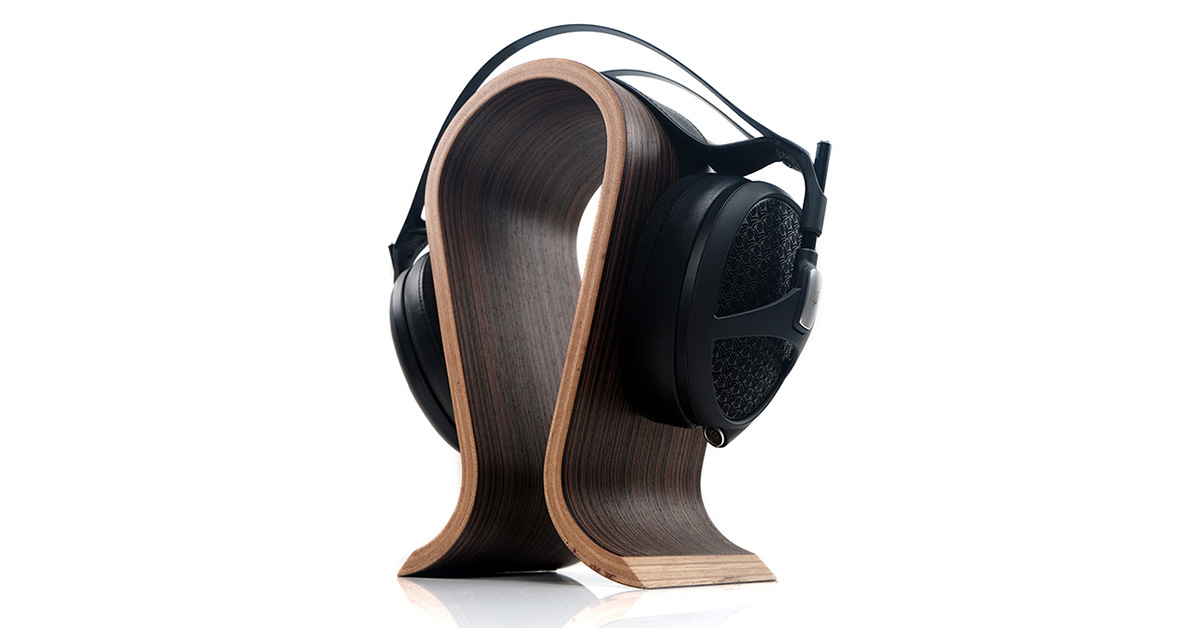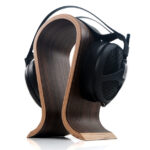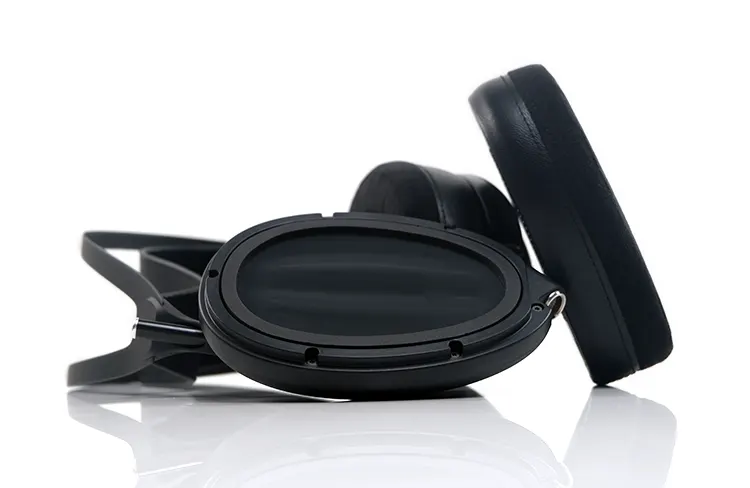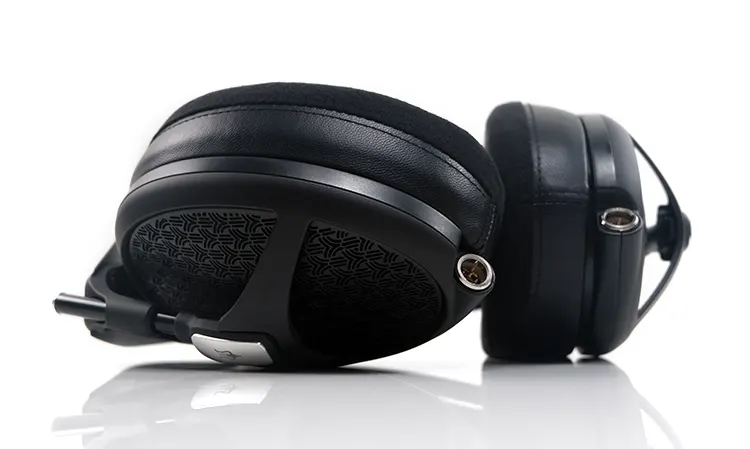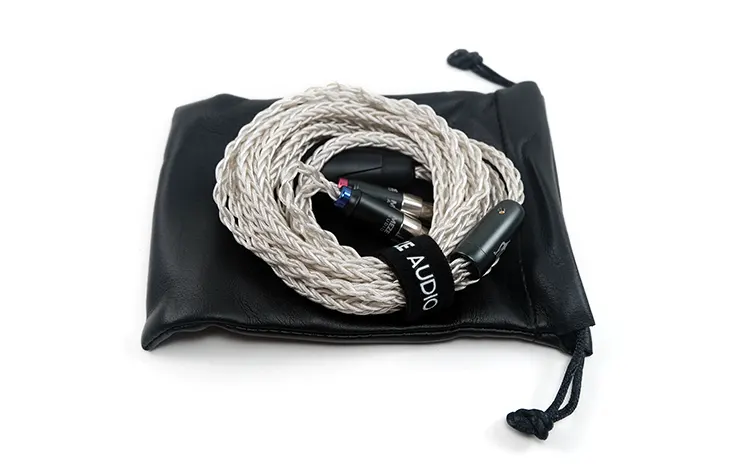In this feature, we review the Meze Audio Empyrean II, which is a set of second-generation high-end open-back planar magnetic headphones. They are priced $$2,999.00.
Disclaimer: This is a sample sent to us in exchange for our honest opinion. Headfonics is an independent website with no affiliate links or status. We thank Meze for their support.
To learn more about Meze Audio products previously featured on Headfonics you can click here.
Note, that this article follows our latest scoring guidelines which you can read here.
It has been 5 years since the launch of the original and very popular open-back planar magnetic headphones, the Meze Audio Empyrean. We reviewed it shortly after in early 2019 and gave it our Top Gear Award for that same year alongside Diana Phi.
Since then, we have seen the launch of the Elite surpassing the Empyrean as the flagship headphone in the company’s line-up, a position it holds to this day.
Thus, the launch of the new Empyrean II should be seen as a direct replacement for the original and not above the Elite. At least from a pricing perspective since it is still the same $2999 as five years ago.
And to the untrained eye, the beautiful physical appearance of the Empyrean II might seem largely similar to the original.
However, let me tell you, this is a very different-sounding headphone to the one that came out five years ago. A good thing? Well, that depends on how wedded you are to the V1 sound.
Tech Highlights
Tweaked Driver
I called this ‘tweaked’ because the Empyrean II essentially uses the same MZ3 Isodynamic Hybrid Array Driver as the original.
For those unaware the MZ3 driver is a very unique proposition. This is essentially 2 voice coil trace designs merged into one driver.
The first is an individual switchback which looks like curved lines and focuses on low-end delivery. The second is a circular pattern at the bottom designed to focus on the mids and highs.
The circular pattern is at the bottom to get it directly over your ear. In doing so there should be a qualitative reduction in non-reflected soundwaves and an improved perception of imaging and staging.
The hybrid aspect of the design can be found in the arrangement of the magnets on either side of the diaphragm. The symmetrical placement of the neodymium magnets on either side is to maximize the efficiency of the isodynamic magnetic field.
Ideally, the diaphragm will operate in a uniform and consistent manner as a result. This is critical given the dual trace design of the diaphragm for both lows and highs.
The Empyrean II driver changes include a new acoustic mesh on the front side of the driver that compliments a redesigned acoustic damper at the back of the driver.
Meze also improved the treatment applied to the driver membrane to further reinforce it and make it more resilient. Taken as a whole, the changes applied means Empyrean II sounds significantly different from the original.
New Pads
As with the original, the Empyrean II also cleverly integrates two different types of detachable pads into the final tuning signature.
Each pad has an isodynamic magnetic alignment system that forms part of the final tuning and performance of the hybrid diaphragm rather than just providing the usual seal and comfort.
The differing materials also naturally adjust the sound beyond the technical aspect of the magnets at the base. The change was not subtle either and there were quite a few owners who preferred one pad over the other.
The original versions were solid non-perforated leather and Alcantara. I was always in the leather camp for its tighter more neutral sound signature and the better bass performance. The Alcantara appealed to those who wanted more low-end warmth and presence, relaxed mids, and a little more treble presence.
The new Empyrean II pads are now a hybrid mix of leather and Alcantara called Duo and a wholly Alcantara softer angled pad.
The Duo is the most different of the line-up to date with a mix of leather base with perforations on the internal lining and an Alcantara top. It will give you a mix of sounds somewhere in between the neutral bass-rich original leather pads and the airier warmer older Alcantara pads.
The new Alcantara versions are not as tall as the old ones and also have perforations on the inner wall which the older versions did not have. This will produce an airier tone but not quite as warm as the original Alcantara pad.
Both of the new Empyrean II pads also have a small and light black material covering the inner grill which may have some sonic properties compared to the older pads which did not have any cover.
Design
The Empyrean II has the same world-class headphone form factor as the original, however, the finishing is slightly different.
It is still, to this day, one of the most beautifully designed headphones I have ever reviewed. And it is not just pretty for pretty’s sake, it also serves a function with incredible levels of comfort for a 455g headphone.
So, what has changed? You get the same teardrop or ovoid form factor with the arching carbon fiber headband and leather strap ‘patented suspension wings design’. You also get the same smooth adjusting vertical rod system for overall headband adjustment and the cleverly integrated mini-XLR connectors at the base.
Going ovoid over traditional circular allows a closer fit to the ear and uses less surface area compared to traditional planar magnetic designs which helps to keep the weight down.
It’s the finishing of the Empyrean II, especially with the cup grills, and the pads that stands out as the biggest changes both in terms of function and aesthetic.
The original sample I have here is gunmetal and bronze, which has now changed to a stealthier matte black with the Elite’s silver accents retained in some focused areas such as the Cup logo on the yoke and the tip of the adjusting rods.
The CNC’ed grill patterns on the Empyrean II have changed as well. Gone is the faint Persian aesthetic with a new and more intricate Art Deco pattern taking its place. It looks very cool, to be honest.
Comfort
There are only a handful of headphone designs that come close to the comfort levels of the Empyrean II at this level. Ones that spring to mind include the DCA Stealth and Expanse as well as the Susvara.
Of those three only the DCA flagship models come close to the complete package in terms of looks and comfort.
It’s not just the spacious inner pad openings or the excellent memory foam materials inside the pads. It is the whole, from the leather strap down to the cups, the Empyrean II perfectly attenuates the pressure to give you an almost perfect balance across both the scalp and the side of your head.
The articulation is excellent with plenty of lateral and vertical articulation to get the angle just right on anyone’s head. For me, I prefer a close fit so I tend to set and forget the Empyrean II adjusting rods to one of their lower settings.
I did this like once on the original Empyrean and they have never been moved again which is a shame since the slide adjustment is super smooth to play around with.
The detachable pad system is really easy to work with. Simply lift off and press on and you are good to go with the handy magnet system keeping them in place. For me, this ease of use encourages pad swapping which is a good thing.
Of the two pads, the Alcantara angled pads are a little comfier with the Duo pad’s leather base giving them a firmer feel on the head but they are not that far behind in all honesty.
Stock Cable
The Empyrean II comes with a choice of two cables, a silver-plated PCHUD and a copper alternative which is the Braided Furukawa wire that I currently use with the original Empyrean. Both cables come with a stock length of 1.3m but you can go higher to 2.5m at the checkout depending on your needs.
Since the copper version has already been here for the last 5 years, this Empyrean II sample came with the 4-pin silver-plated PCHUD cable. Like the copper version, this is also a braided Furukawa wire with 0.04 mm x 140 conductors in an 8-wire to 4-wire continuous braid geometry.
The wire is then tightly braided inside a TPD sleeve build and handles like a boss. I was not surprised given how nice the copper version is when handling it. You get no memory kinks or microphonics and whilst it is a bit on the heavy side, it remains very disciplined when handling.
Left and right markings on the mini-XLR connectors are also easily distinguishable with red and blue rings which saves a lot of time aligning them. The XLR plugs on the other end are some good quality Neutrik plugs and the splitter is a solid gunmetal-finished rounded aluminum design.
Packaging & Accessories
Aside from the cable and pads, the Empyrean II comes with a completely new black carry case, or perhaps a retro-inspired travel case is the better description.
I much prefer this design over the older silver wider case. It looks beautiful with a comfortable leather handle that perfectly matches the Empyrean II health pressure strap. I am pretty sure it’s the same material.
The outer is a durable ABS material and likely can handle a knock or two. To ensure the Empyrean II does not get damaged there are copious amounts of carefully contoured foam on the inside that also houses the pads, manual, and the warranty card.
Just to note, the cable comes separately in a small black box and is complete with a leather pouch for carrying it. Once in the pouch, you can safely stick the cable inside the case as there is plenty of room for it.
Click on page 2 below for our sound impressions and recommended pairings.

